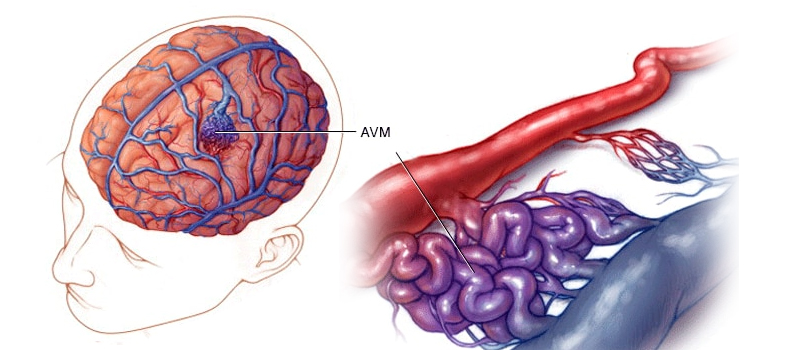The circulatory system is perhaps one of the most complex networks in the human body. This system is made up of the heart, blood vessels, blood, lymph, glands, and lymphatic vessels. The circulatory system is majorly responsible for transporting lymph and blood to all parts of your body.
This system is self-regulating, and the intricate structure has everything in its right place.

However, it is susceptible to vascular conditions that can affect optimum functioning. One of these conditions is arteriovenous malformation (AVM).
What exactly is an arteriovenous malformation, how does it affect your circulatory system, and should you consult a doctor if you notice common symptoms? Read on to learn more about arteriovenous malformation.
What is arteriovenous malformation?
This is a vascular condition where blood vessels get tangled, thereby disrupting the normal supply of blood to various body parts. The condition can affect arteries and veins, both of which are responsible for blood flow from the heart to different body parts and back.
Most of the entanglement happens in the spinal cord and brain, although it can occur anywhere else in the body. Your body comprises about 100,000 miles of blood vessels, so it is not uncommon for the arteriovenous malformation to appear in any body part.

Arteriovenous malformation symptoms vary widely depending on the affected area. In many cases, the first symptom is bleeding. Other common symptoms of the vascular disorder include;
- Seizures
- Headaches
- Nausea and vomiting
- Loss of consciousness
- Progressive loss of neurological functions
Other signs that could present with time are;
- Weak muscles
- Speech problems and difficulty understanding language
- Hallucinations
- Dementia or memory loss
- Numbness, sudden pain, and tingling sensations
- Problem executing tasks that require planning
What causes arteriovenous malformation?
Currently, the cause of AVM is not clear. Although most arteriovenous malformation types are not inherited, some genetic factors have been linked to the condition. In extremely rare cases, a family history of the condition can increase your chances of developing it.
Because the causative factors remain unclear, preventing the condition has proven particularly difficult. In addition, arteriovenous malformation can happen before or after birth, which further confuses researchers on the root cause.
Complications linked with arteriovenous malformation
Common complications linked with the vascular condition include;
- Strokes
- Seizures
- Comma and death
- Aneurysm
- Brain damage

Can arteriovenous malformation be treated?
There are no clear drugs that have been substantially proven to fully treat the condition.
Fortunately, vascular specialists can manage the symptoms and improve the patient's quality of life. It is vital to seek medical intervention services as soon as you notice the above-mentioned symptoms for the best results.
Where can you get help?
Vascular clinics can help manage the condition and initiate treatment options like surgery, embolization, and gamma knife radiosurgery. A vascular expert can help you understand more about these treatment options and what best suits the patient.
Washington Vascular Specialists offers quality care services in the management of arteriovenous malformation. You can get a comprehensive treatment service that includes screening, diagnosis, and tailored management and remedial options.
To learn more about the condition or to know what the next steps are after diagnosis, you can book a one-on-one appointment with a vascular specialist.



